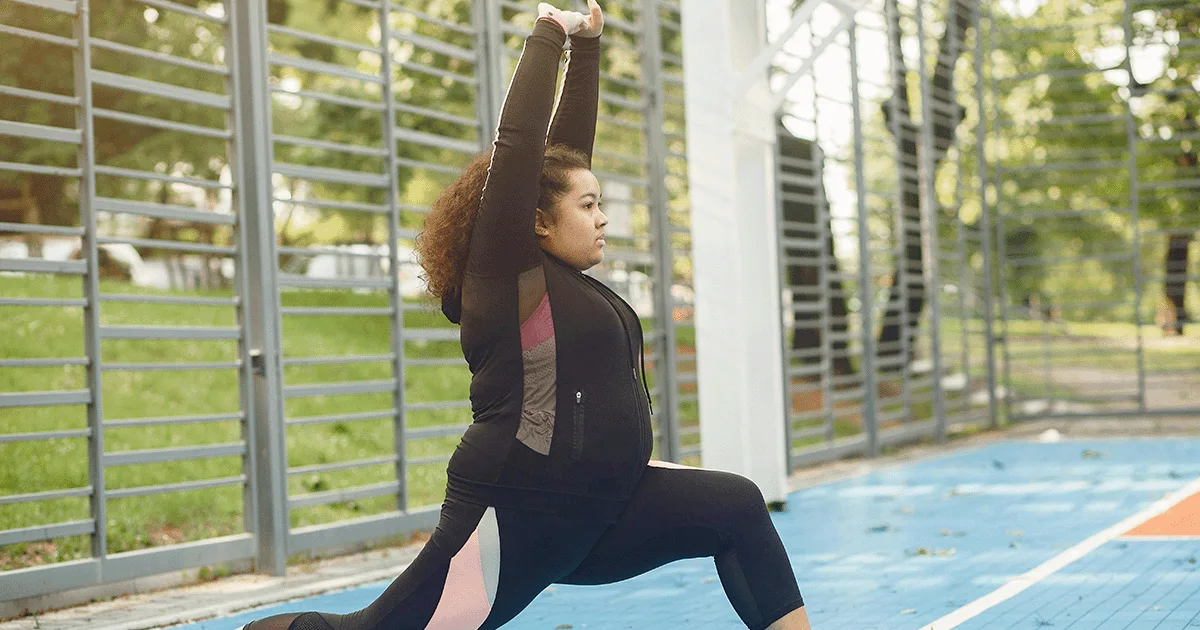Here's what we'll cover
Jardiance is a diabetes medication that can help people with type 2 diabetes control their blood sugar. But research has shown that the medication may have other effects, too, including stimulating weight loss.
And while Jardiance isn’t a weight loss medication, per se, the use of diabetes medication to aid in weight management isn’t new. Drugs such as Ozempic are FDA-approved for treating type 2 diabetes, but have also been shown to produce significant weight loss, making them a popular option for the treatment of diabetes in people who also have obesity.
While the weight loss among people using Jardiance (generic name empagliflozin) isn’t as significant as with some other medications, it may be a welcome side effect for some patients. Read on to learn more about how Jardiance helps with weight loss and its associated warnings and side effects.
What is Jardiance?
Jardiance is a prescription medication used to treat type 2 diabetes. Jardiance is manufactured by Boehringer Ingelheim Pharmaceuticals and contains the active ingredient empagliflozin, which is part of a class of medications called sodium-glucose co-transporter 2 (SGLT2) inhibitors. It is FDA-approved for the following indications:
To lower the risk of hospitalization and cardiovascular disease in adults with heart failure
To reduce the risk of cardiovascular death in adults with type 2 diabetes mellitus and heart disease.
To improve blood sugar control in adults with type 2 diabetes mellitus, along with diet and exercise
The drug works by stopping the kidneys from bringing glucose back into the bloodstream, thereby helping to remove excess sugar from your body and reduce blood sugar. SGLT2 inhibitors are an effective treatment for people with type 2 diabetes because they help the body regulate blood sugar levels, especially when combined with diet and exercise.
Can Jardiance help you lose weight?
Weight loss is a complex phenomenon that relies on several factors, like diet, exercise, medications, age, etc. Many of the newer drugs being used for weight management were initially found to help with diabetes, like semaglutide and liraglutide. So what about Jardiance?
While it is not specifically FDA-approved for weight loss, data suggests that Jardiance may help some people lose weight. Clinical trials showed that adults taking the 10 mg dose of Jardiance to treat their diabetes had an average weight loss of 2.8% from their baseline weight (their weight at the start of the study), and those using the 25 mg tablet had an average weight loss of 3.2% of their baseline weight. The group using placebo, in comparison, had an average weight loss of around 0.4%.
To put this in perspective, a person who weighs 250 lbs and takes 10 mg would lose about 7 lbs, and that same person on the 25 mg dose might expect to lose around 8 lbs.
Weight loss was slightly greater in people who combined Jardiance with another diabetes drug, like metformin, than when Jardiance was used on its own. Combining Jardiance with lifestyle changes, like a healthy diet and increased exercise, can increase weight loss more than either factor alone.
But wait, there’s more: Another study showed that Jardiance can decrease not only body weight but also body fat distribution. Specifically, Jardiance may decrease visceral adiposity or belly fat. This is important because people with higher levels of belly fat, also known as abdominal fat, have an increased risk of diabetes, heart disease, and plaque buildup in the arteries (which can lead to heart attack and stroke).
Researchers also found that Jardiance can reduce blood pressure after 24 weeks of use. This added benefit is particularly important for people with diabetes or heart failure since elevated blood pressure can increase the risk of heart attack and stroke.
While a clinician can determine if Jardiance is the right medication for you, when it comes to weight loss, Jardiance isn’t the most effective diabetes medication available for weight loss. Medications like Wegovy (semaglutide) typically cause more weight loss than Jardiance.
How long does Jardiance take to work?
Jardiance starts to work to lower blood glucose levels right away, but it may take longer to see other effects, like weight loss.
Initial weight loss can happen as early as six weeks after starting treatment. This reduction in body weight is most likely due to loss of water weight. As the kidneys get rid of the extra sugar in the bloodstream, water is lost too. You may notice a slight increase in how often you need to pee. From then on, the weight loss slows a bit and it may take six to nine months for you to see the full body weight decrease effect.
Common Jardiance side effects
While not everyone experiences side effects while using Jardiance, some are more common than others. Side effects can include:
Urinary tract infections
A urinary tract infection (UTI) occurs when bacteria grow in your urinary system, including the kidneys, ureters, bladder, and urethra.
Symptoms of UTIs include:
Pain with urination (dysuria)
Frequent urination (frequency)
Dark or cloudy urine
Urine with a strong odor
Blood in the urine (hematuria)
UTIs are a side effect because Jardiance increases the amount of glucose (sugar) in your urine, making conditions more favorable for bacteria.
While urinary tract infections are much more common in women in general than in men, Jardiance can increase that risk further, especially when taken in higher doses.
If left untreated, UTIs can become serious and may lead to a kidney infection, especially if you have any of the above symptoms along with fever, chills, vomiting, or back pain. If you suspect you might have a UTI, speak with your health care provider who can do a simple test to determine if you might need treatment with antibiotics.
Genital fungal or yeast infections
Genital fungal or yeast infections are another common side effect of Jardiance that typically affect females more than males. Yeast infections in clinical trials were reported in 5.4–6.4% of females. In males, only 1.6–3.1% had yeast infections. These infections typically resolve with treatment and do not require a change in medication.
Increased urination
It should come as no surprise that around 3% of people who take Jardiance may experience increased urination. The drug works by helping the kidneys pull glucose out of the blood into the urine. By excreting more sugars in your urine, you pull more water along with it. This creates the effect of needing to “go” more often and is a direct result of how Jardiance works.
High cholesterol
Around 3-4% of people taking Jardiance experienced a rise in their low-density lipoprotein or LDL cholesterol, also known as “bad cholesterol.” If you’re taking Jardiance, your healthcare provider may choose to monitor your cholesterol levels, as well.
Joint pain
About 2.4% of people taking Jardiance reported experiencing joint pain. Interestingly, around the same percentage of people who took the inactive placebo also complained of joint pain. So it is unclear whether Jardiance itself causes joint pain.
Jardiance warnings
Most of the common side effects of Jardiance are mild to moderate and don’t require patients to stop using the medication. However, more serious side effects can occur that may require urgent medical treatment. Certain groups are at higher risk of adverse events if they use the drug.
Low blood sugar
Many medications used to treat diabetes can increase the risk of low blood sugar (hypoglycemia) and Jardiance is no exception. However, the effect is amplified if Jardiance is combined with other diabetes medications, like sulfonylureas or insulin. Low blood sugar can cause dizziness, sweating, chills, and abdominal pain as well as loss of consciousness. Without treatment, low blood sugar can be fatal. Speak with your healthcare provider to learn about how to identify this condition and how to treat it.
Diabetic ketoacidosis
Diabetic ketoacidosis, or DKA, is a life-threatening condition where the body creates too many ketones (a type of protein), making your blood acidic and leading to all sorts of problems. It is often associated with high blood sugar levels but can occur with normal glucose readings. People with type 1 diabetes are at higher risk than those with type 2 diabetes, but both groups are at risk. Jardiance increases the chance of developing DKA and is not approved to treat people with type 1 diabetes. Symptoms of DKA can include rapid breathing, fruity-smelling breath, dry mouth and skin, flushing, nausea and vomiting, and more. This is a medical emergency requiring immediate treatment.
Dehydration
Since Jardiance promotes water loss through urine, it can also lead to dehydration. If you are taking Jardiance, monitor your fluid intake and opt for water whenever possible. Being dehydrated can also lead to low blood pressure and fainting. In some cases, dehydration can be so severe that it causes kidney problems.
Fournier’s Gangrene
Gangrene is a rare but life-threatening condition that causes body tissues to die and requires urgent surgery. Fournier’s gangrene is a type of gangrene that affects the genital area in both males and females and has been reported as a side effect of SGLT-2 inhibitors like Jardiance.
Hypersensitivity reactions
Some people develop a mild allergic reaction to Jardiance, like a skin rash or itching. Rarely, severe allergic reactions may occur with symptoms like swelling of the face or tongue and trouble breathing. This type of reaction requires urgent medical treatment.
Pregnancy or breastfeeding
Jardiance is not recommended for people in the second or third trimesters of pregnancy or those who are breastfeeding.
Severe kidney disease
Since Jardiance works in the kidney, people with severe kidney disease are at higher risk for serious side effects. Be sure to share your full medical history with your healthcare provider before starting any new medication, including a full list of all medications you are taking and any medical procedures you’ve had in the past. People with a history of kidney disease may require more frequent monitoring than those without.
The best time of day to take Jardiance for weight loss
Jardiance comes in oral tablets available in two strengths: 10 mg and 25 mg. You should take the dose of Jardiance prescribed by your healthcare provider in the morning, with or without meals. Ideally, it should be taken around the same time each day. If you miss a dose of Jardiance, take it as soon as you remember. However, if it’s almost time for your next dose, just take that one dose and don’t double up. Taking a double dose increases your risk of side effects.
Can you stop Jardiance?
If you are experiencing unpleasant side effects from Jardiance or wish to stop using it for any reason, speak with your healthcare provider first. Many people who use Jardiance use multiple medications and the balance between them can be crucial, so stopping the medication without consulting your doctor can be dangerous.
Speak with your healthcare provider to address your concerns.
DISCLAIMER
If you have any medical questions or concerns, please talk to your healthcare provider. The articles on Health Guide are underpinned by peer-reviewed research and information drawn from medical societies and governmental agencies. However, they are not a substitute for professional medical advice, diagnosis, or treatment.
References
Bono, M. J., Leslie, S. W., & Reygaert, W. C. (2022) Urinary tract infection. StatPearls. Retrieved from https://www.ncbi.nlm.nih.gov/books/NBK470195/
Lizzo, J. M., Goyal, A., & Gupta, V. (2023). Adult diabetic ketoacidosis. StatPearls. Retrieved from https://www.ncbi.nlm.nih.gov/books/NBK560723/
Neeland, I. J., McGuire, D. K., Chilton, R., et al. (2016). Empagliflozin reduces body weight and indices of adipose distribution in patients with type 2 diabetes mellitus. Diabetes & Vascular Disease Research, 13(2), 119–126. doi:10.1177/1479164115616901. Retrieved from https://www.ncbi.nlm.nih.gov/pmc/articles/PMC4768401/
Padda, I. S., Mahtani , A. U., & Parmar, M. (2023). Sodium-glucose transport protein 2 (SGLT2) inhibitors. StatPearls. Retrieved from https://www.ncbi.nlm.nih.gov/books/NBK576405/
Ribola, F. A., Cançado, F. B., Schoueri, J. H., et al. (2017). Effects of SGLT2 inhibitors on weight loss in patients with type 2 diabetes mellitus. European Review for Medical and Pharmacological Sciences, 21(1), 199–211. Retrieved from https://pubmed.ncbi.nlm.nih.gov/28121337/
Sargeant, J. A., King, J. A., Yates, T., et al. (2022). The effects of empagliflozin, dietary energy restriction, or both on appetite-regulatory gut peptides in individuals with type 2 diabetes and overweight or obesity: The SEESAW randomized, double-blind, placebo-controlled trial. Diabetes, Obesity & Metabolism, 24(8), 1509–1521. doi:10.1111/dom.14721. Retrieved from https://pubmed.ncbi.nlm.nih.gov/35441435/
U.S. Food and Drug Administration. (2022). Highlights of prescribing information: Jardiance (empagliflozin tablets). Retrieved from https://www.accessdata.fda.gov/drugsatfda_docs/label/2022/204629s039lbl.pdf











